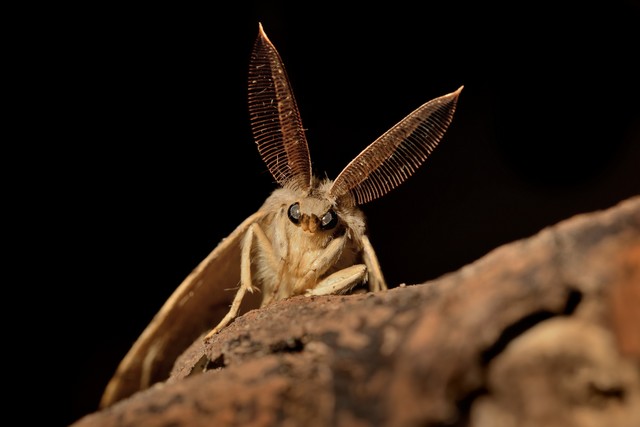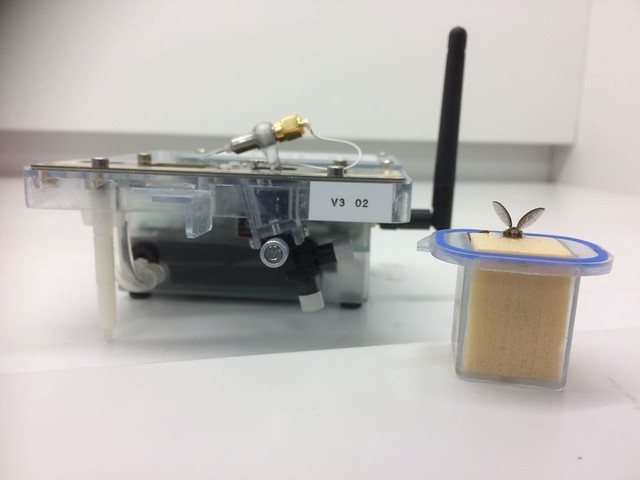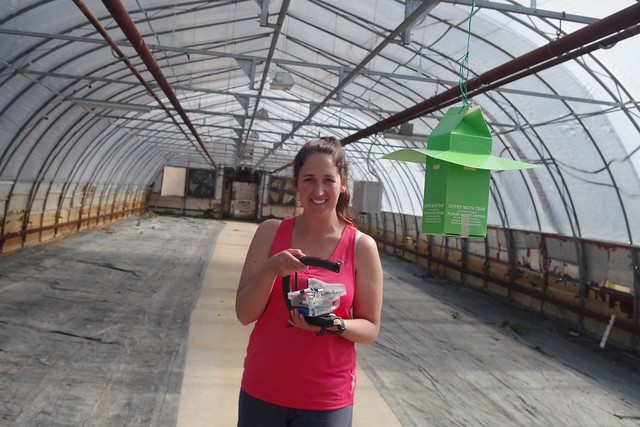The making of a cyborg

New Zealand’s biosecurity system is under increasing pressure to prevent establishment of unwanted pests and pathogens.
It is a constant challenge for industry and biosecurity officials, with 8,500 plant pests (insects/pathogens) intercepted at New Zealand’s border in 2018. Although only a small proportion of arrivals are likely to be serious pests, those few can do immense amounts of damage if they are not intercepted.
Our best chance to prevent insect pests from gaining hold is to discover them early because small populations are easier to eradicate. Eradication is also more cost effective than long-term pest management.
Scion and our partners are using live insects to detect the signature chemical calling cards of their females. This approach turns the traditional ‘set traps and wait’ methodology on its head and has the potential to dramatically improve eradication likelihood.
The science
Male insects have an incredible ability to detect the signature pheromones of their female counterparts. The males sense the unique chemical signature of the female’s pheromones with hair-like olfactory sensors on their antennae. The antennae then send an electric signal to the insect’s brain.
Scion and partners have developed a lightweight portable electroantennogram (EAG) – a device that can use the sensors on insect’s antennae to indicate where other insects are lurking. The aim is to mount this device on an unmanned aerial vehicle (UAV) to actively search for odour traces in tree canopies where concentrations may be greatest.
Using a live moth, researchers attach the moth’s antennae to the EAG, which reads the electric signals produced by the moth’s antennae. The data collected is transmitted wirelessly in real time to a computer, which is monitored by researchers looking for the tell-tale signs that indicate a moth has sensed female pheromones and a female moth is somewhere nearby.
Researchers are keen to understand if this approach could speed up our biosecurity response times and help eradicate pest species before they have an opportunity to become firmly established. Two hand-held prototypes have been developed and have shown promising results.
During initial testing with gypsy moths in Canada the EAG detected gypsy moth pheromones 30 m from a dispenser in a controlled turbulent environment. Laboratory results have shown the prototypes are impressively sensitive and could detect one nanogram of gypsy moth pheromones in a microlitre, equivalent to finding one sugar cube in 400 Olympic swimming pools.
It is easy to imagine the possibilities with more research and development, and how a lightweight UAV-ready EAG could help locate pests, speeding up the response time and increase the likelihood of eradication.
A departure from the status quo
The portable EAG is a departure from current methods for controlling pest species, such as pheromone traps.
For example, the gypsy moth caterpillar is a voracious eater with nasty stinging hairs. It was eradicated from New Zealand in 2005 and officials developed an extensive pheromone trapping network to ensure it does not re-establish here.
With each new species that arrives, it can take months to years to isolate the right pheromones and its passive nature requires biosecurity control officers to wait and hope pests find the traps.
For the portable EAG to work, all researchers need is a male moth of the right species. They can tune the device and begin actively searching for females and receive results in real time. There is also potential to easily adapt the portable EAG to a wide range of species (though detection proximity will vary between species depending on the male’s sensitivity to the female pheromones).

Trialling the approach
We need to better understand insect behaviour and this research could be a game changer.
Using this approach researchers could begin to understand how insects move around and search for each other. There is also potential to learn how pheromone clouds behave in the atmosphere and how they are affected (and diluted) by turbulence.
The long-term research goals include turning these insect searching behaviours into algorithms, enabling a cyborg to search just as a live moth would, reducing the need for humans to make decisions to guide the moth.
For now, the project team is refining and developing their two handheld prototypes on three different species - the Agrotis ipsilon - greasy cutworm (France), Lymantria dispar dispar – European Gypsy moth (Canada), Epiphyas postvittana - light brown apple moth (New Zealand).
Next steps include testing how the prototypes detect a pest in a known location and taking the portable EAG from laboratory and wind tunnel environments into the field.
Collaboration
This work is part of a wider research programme entitled ‘Protecting New Zealand's primary sector from plant pests; a toolkit for the urban battlefield’ focused on developing novel approaches to increase the effectiveness of eradication programmes for insect pests of plants. The programme was funded by the Ministry of Business, Innovation and Employment’s Endeavour Fund, working in collaboration with Institut national de la recherche agronomique (INRA), Chargé de recherche CNRS, LORIA, Natural Resources Canada (NRCAN) - Great Lakes Forestry Centre.

